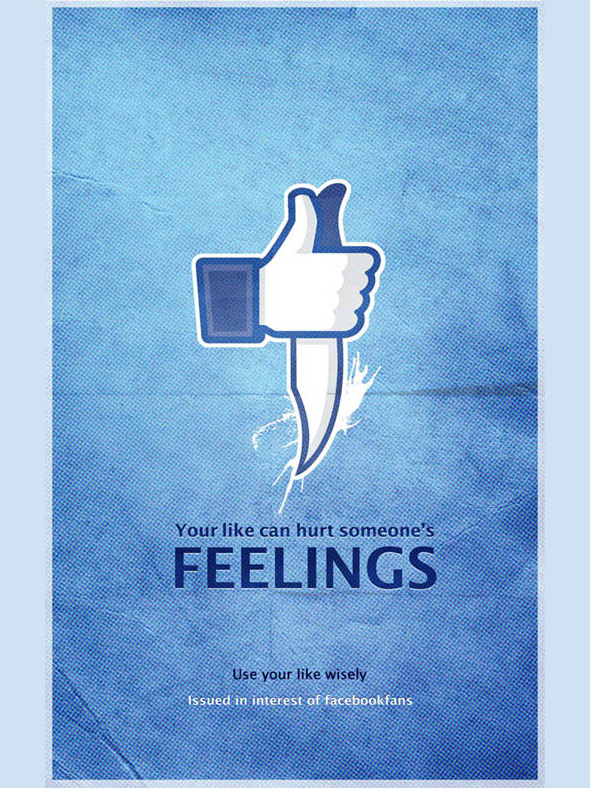Every day we scour the interwebs for new tricks.
New tips to implement or new hacks to exploit.
But here’s the thing. When you start analyzing what works across advertising networks today, you start noticing the same trends: The same patterns that result in higher Quality Scores, generate traffic or get you more paying customers are anything but new.
Here’s why your ads on AdWords and Facebook should incorporate the same principles and formulas and techniques (like AIDA and PAS) that ads have been using for the last century to increase results.

Oooooooold school
In today’s article, we’ll cover why these totally old-school advertising techniques still work, and outline three steps you can follow to get the same results.
(Shout out to Swipe Worthy for helping me find many of the vintage ads featured below.)
Where Good Ideas Come From
Facebook only recently started allowing Branded Content on their platform.
That means you (the advertiser) could partner with an influencer to get your message across to the masses.
Better still, they organized everything for you in a helpful ad format. So advertisers can finally – at laaaaast – draw a direct line from influencer marketing campaign spend to revenue or sales.
Smart move, right?
After all, nobody’s looking at typical ads today. The overwhelming majority are banner blind. Ad blocking technology installation has ballooned 4x over the past few years.
If not ads, where are people getting their information? Their product recommendations?
Friends and family. Real, living, and breathing human beings are trusted a shocking 92% more than company-sponsored messages. Even if they don’t know them personally!
So turns out, there is something to this influencer marketing thing after all. People are listening. They are buying.
But here’s the deal.
This ain’t some new-aged, millennial thing.
In fact, your grandparents bought into it. And theirs before that.
Soap operas?
There’s none greater than As the World Turns, airing for 54 years. (!)
Don’t look to Hollywood though. It was originally funded and produced by Proctor & Gamble. Hell – P&G literally invented the “Soap Opera.”
What was good once, still works. It’s just needs a little updating.
Here’s how to do it.
Step #1. Capture the Reader’s Attention
“I don’t always drink beer, but when I do I prefer Dos Equis.”
It’s fair to say that The Most Interesting Man in the World campaign (RIP) was a success, correlating with a 22% sales increase (or 34.8% since 2007 when the campaign was first introduced).
Not bad, considering the market for domestic brands actually contracted 4% during that time.
It was a land grab; not just taking but outright stealing and plundering market share from the puny, weak competition.
The mass beer market, as a whole, is in a shocking state as craft beer continues to take over.
And yet, a single, solitary campaign allowed Dos Equis to dominate and thrive during this tumultuous time.
That hasn’t happened since well, ever in the past few decades.
Instead, you gotta go back to when media channels were in short supply. When consumer attention wasn’t so fragmented or so damn distracted.
And when you do… when you go back to those golden, olden days of advertising, you realize that we’ve seen this before.
Not just this abstract concept or idea, but this exact campaign.
From who else, but the master:

Ogilvy came up with The Man in the Hathaway Shirt in the the 40s!
Here’s how it came about, from Ogilvy on Advertising:
“In 1947, Harold Rudolph, who had been Research Director in Stirling Getchel’s agency, published a book on the subject. One of his observations was that photographs with an element of ‘story appeal’ were far above average in attracting attention. This led me to put an eye-patch on the model in my advertisements for Hathaway shirts. The eye patch conveyed an aristocratic aura and story appeal of the Hathaway man.”
That’s it. A mysterious aura and simple eye patch, did all it needed to do: grab attention.
One of Ogilvy’s inspirations was Claude Hopkins, who “insisted copywriters research their clients’ products and produce “reason-why” copy. He believed that a good product and the atmosphere around it was often its own best salesperson”… in 1907.(!)
This was the guy who always recommended giving away samples, sent out one of the first direct mail / catalog campaigns to get people to purchase from their home, who urged companies to increase product variations to increase sales, and who got us to brush our freaking teeth. (Read The Power of Habit for more.)
And Hopkins was the guy who wrote Scientific Advertising in the 20s, whose principles we still follow today.
Like, iteration and A/B testing:
“Hopkins outlines an advertising approach based on testing and measuring. In this way losses from unsuccessful ads are kept to a safe level while gains from profitable ads are multiplied. Or, as Hopkins wrote, the advertiser is ‘playing on the safe side of a hundred to one shot’.”
Today’s version of content marketing (which, by the looks of it, is the same as it ever was), uses content hooks to boost CTR to get traffic back to your site.
How?
According to the data, by targeting long-tail (niche) keywords (or topics) that speak to specific pains, desire, or interests and use expanded headlines (or copy) to include emotional triggers.
This is as true on AdWords as it is on Facebook.
Step #2. Develop Interest
The number one fear in America used to be public speaking.

(Before “Corrupt Government Officials” replaced it this last year. That’s no lie. It’s our sad reality.)
So the old joke, if you visit a Toastmasters International meeting, is that “People would rather die than speak in front of an audience”.
Ha. Ha. Ha. Chuckle. Chuckle.
Underneath that nerdy joke, however, is a kernel of truth in there somewhere. (And breaking character again for a second: I would highly recommend Toastmasters.)
Your palms start to sweat even before you get up in front of a room full of people. Your pulse quickens. A lightheadedness sets in. And for some odd reason, you have to tinkle.
But there’s one segment in particular, a simple 1-2 minute question-and-response segment, that can strike the Fear of God into the most devout Atheist.
Alls you gotta do is stand up and answer a question. That’s it. For only 60-190 seconds.
And yet… it’s so F-ing hard. You feel foolish, stammering around for a few seconds as your face gets flushed and you pray for the timer to go off.
Mercifully, one savvy vet delivered salvation to me in a single word: storytelling.
In other words, don’t answer the question. At least not yet. Not at the beginning.
Talk about a familiar story. A related idea or concept. You gotta lay the foundation before delivering the punch line.
(Or exactly what’s been going on here with the extended opening for the past few lines you’ve been reading.)
Here’s the problem. Most people are unaware they have a need for what you do. Or sell. Or talk about on your blog.
Therefore: jumping into the answer or “solution” straight away – without developing that need – falls flat.
That’s where AIDA comes in, which has been around (in one form or another) for over a hundred years. Here’s some dude named Joseph Addison Richards in 1893:
How to attract attention to what is said in your advertisement; how to hold it until the news is told; how to inspire confidence in the truth of what you are saying; how to whet the appetite for further information; how to make that information reinforce the first impression and lead to a purchase; how to do all these, – Ah, that’s telling, business news telling, and that’s my business.
And in English:
- We need to grab Attention
- Before we can develop Interest
- And slowly build Desire
- So that people take Action
Sounds kinda like… the buyer’s journey. Or McClure’s (startup) Pirate Metrics.
A classic AIDA example comes from John Caples, who famously penned:

It’s catchy as hell. Intriguing. That’s how it sucks you in.
This ad is actually for a free book. Seriously. A 19th century lead magnet. What’s old is new again.
Step #3. Get the Reader to Take Action
I’ll let you in on a secret.
It’s not quite ready yet. Still needs a few finishing touches.
But I’m developing a twelve-step program. (*Not really.)
The bedrock of this inappropriate metaphor yet-to-be-developed, Tony Robbins-esque infotainment empire is the same first step as those other successful programs that come before it:
Admitting you have a problem.
Most website visitors may not have a need for your product or service just yet.
As we discovered a minute ago, they don’t always recognize that problem in their life. That’s why average conversion rates depressingly hover around single digits.

BUT.
There is one obvious exception: AdWords.
Nowhere else do people look, find, and buy. Just like that. In the blink of an eye. There’s a reason almost ALL of Google’s revenue stems from its ad business.
In this small yet profitable scenario, someone knows what their problem is. They’re Googling it. They kinda understand the lay-of-the-land. And they’re looking for a solution.
The PAS Formula
If you take nothing else from this post, PAS is it.
Seriously. It’s almost all you need. From ads to blog posts to email newsletters to your homepage copy.
The Problem Agitate Solution formula works so well because it stokes fear. And fear is the “primal” human motivator according to Aaron Orendorff.
PAS starts with naming the problem. Before talking about the symptoms and pain points of said problem. This agitation is literal; like pushing on a bruise to create inertia-busting urgency. Before finally providing the solution, like Neosporin on a burn.
Here’s an example from the 80’s:

Here, the image says it all. It perfectly highlights the opportunity missed. Which the headline points out.
Kinda reminds me of a contemporary, corollary example from an article I wrote a couple weeks ago:

Same idea – this ad shows you what you stand to gain, tacitly comparing you to 100,000+ other websites already getting those gains that you’re missing.
Here’s another, wordier example:

Gee. I feel like I’ve seen this technique before. Somewhere. Recently.
But where was it…?

Wait. Stop. Go back.
That wasn’t a clever in-line CTA to trick you into clicking. That WAS the example.
- Problem: Mistakes are killing your ad spend.
- Agitate: Here’s exactly how much you have in wasted spend and where you’re wasting it.
- Solution: Duh! Sign up for WordStream!
BUT. What about complex, expensive, hard-to-sell stuff?
How do you get people to take action from a simple online ad?
The short answer is a tripwire: an introductory offer that’s low-friction and simple and attainable, but helps you filter the buyers from the tryers.
Below is an excellent example, followed by a longer discussion of how to put it into practice:

(image source)
However…
Tripwires ain’t some new-aged thing, either.
Look! A tripwire! From the 60s!!!

Take a Page from Vintage Ads
There’s no shortage of “new” tips and hacks online today.
In fact, there’s too many. It’s overwhelming.
But if you pause for a second, take a deep breath, and look around at what’s driving results, you start to pick up on some clues.
The same underlying advertising principles that have worked over the last 100+ years can work for you now!
Source by Wordstream

























